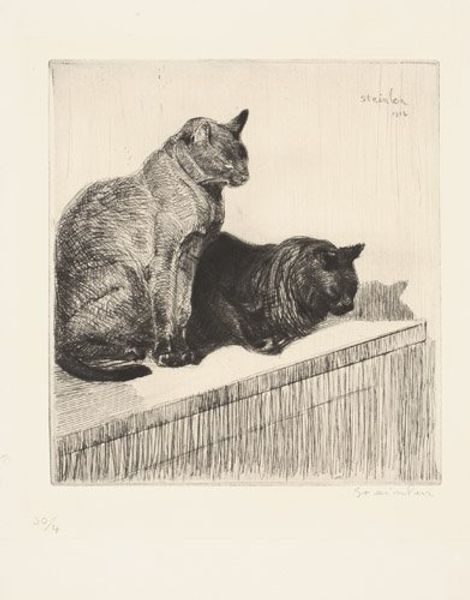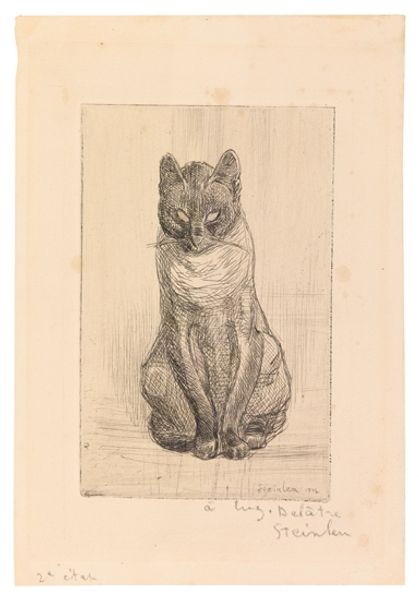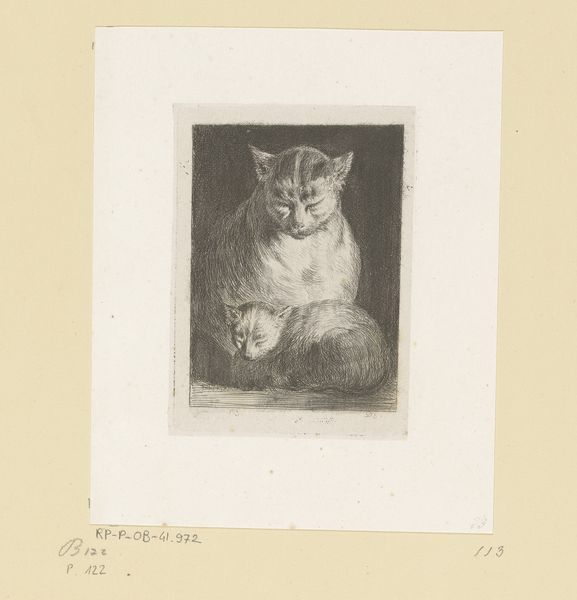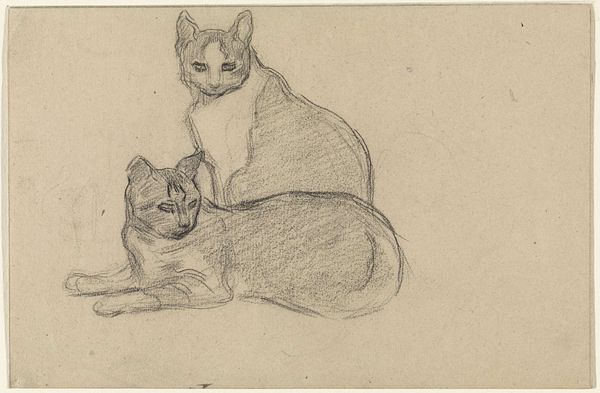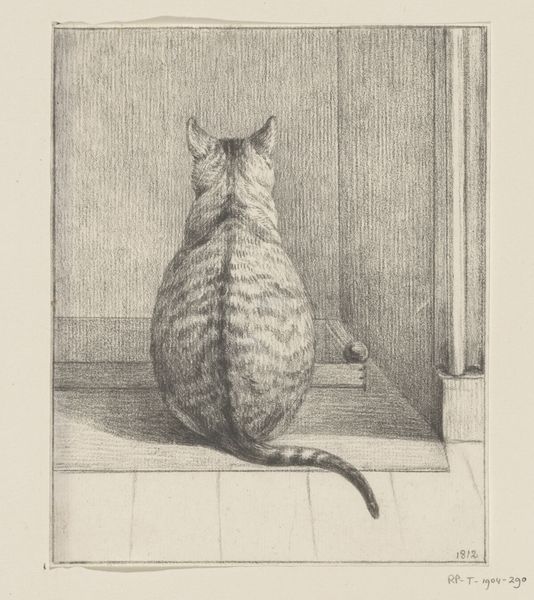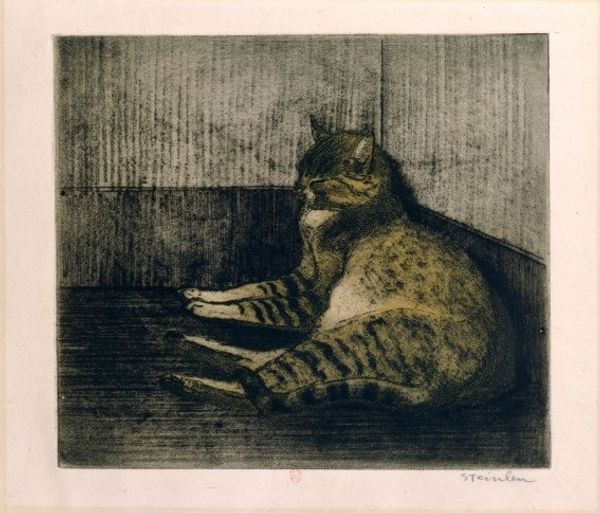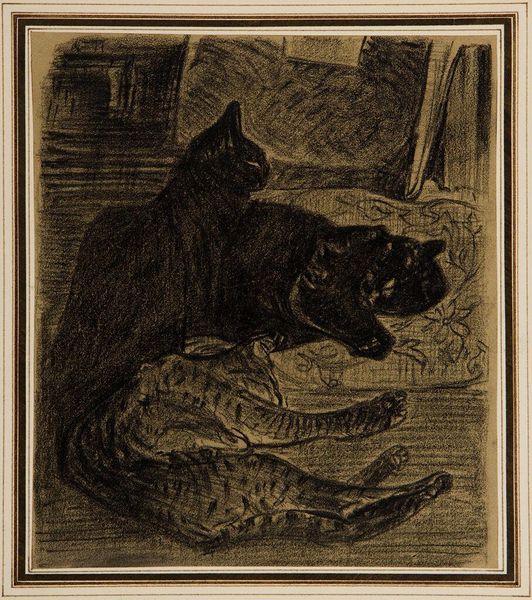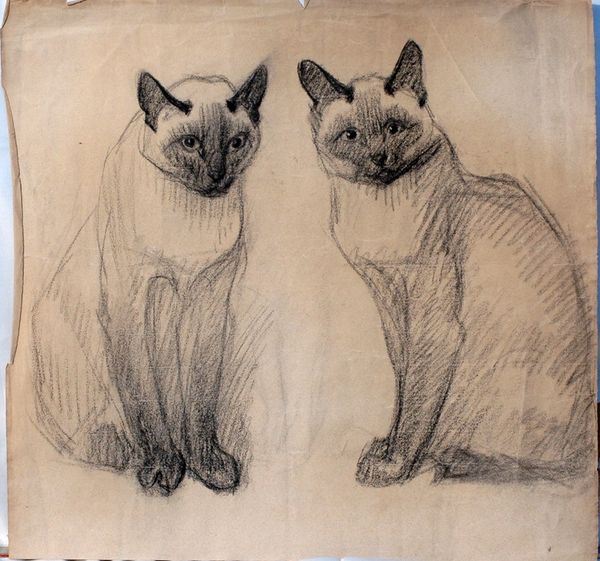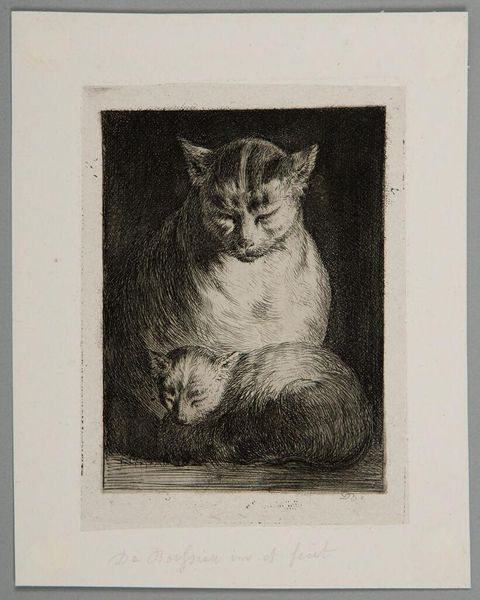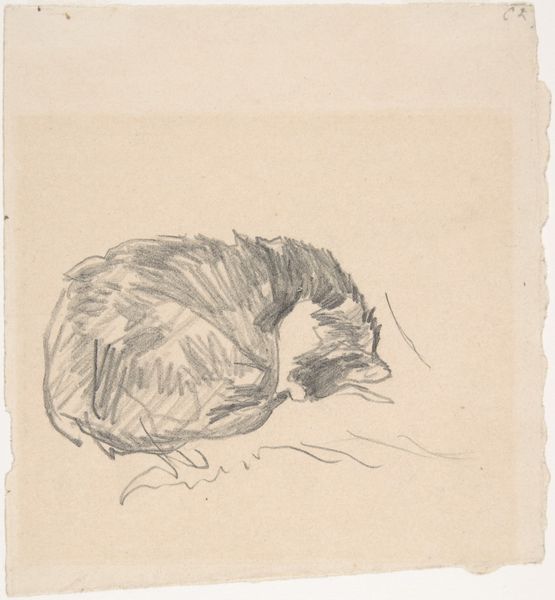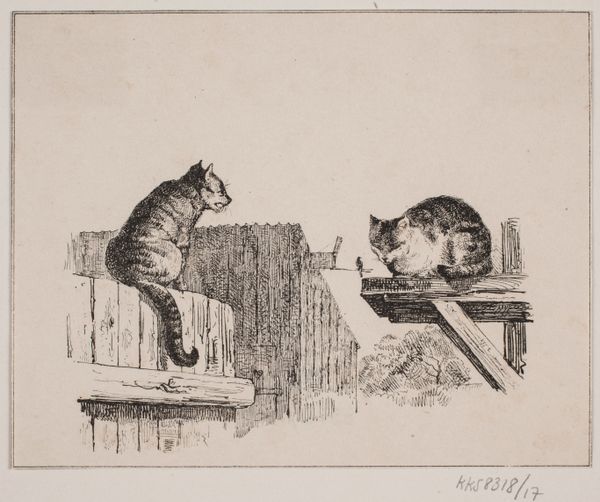
print, etching
# print
#
etching
#
charcoal drawing
#
figuration
#
pencil drawing
#
symbolism
Copyright: Public domain
Curator: Let’s take a closer look at Thèophile Alexandre Steinlen's 1914 etching, "Two Cats on a cabinet." Editor: Immediately striking, isn't it? There's a domestic intimacy to the scene, but also a somewhat somber tone created by the sharp lines and limited shading. Curator: Indeed. Steinlen was, of course, very involved in the social and political movements of his time, and this etching, while seemingly a simple depiction of domesticity, was likely produced in an edition, for popular consumption in periodicals with radical politics, meant to serve a moral compass or an allegory on working-class issues and the human condition, maybe even as commentaries during WWI. Editor: Focusing on the process, notice how the varying densities of the etching lines—the pure labor of production—defines the cats' forms, but also establishes the cabinet’s patterned surface beneath them? It really emphasizes the physicality of their presence. And that visible plate mark underscores the printmaking process itself. It challenges that fine-art/craft divide. Curator: The setting is interesting, especially considering the socio-political backdrop. The cats' posture reflects themes of urban observation and social commentary prominent in his overall body of work; they observe their surroundings from a point of privilege, yet appear alert to impending challenges, perhaps alluding to the period of unrest throughout Europe? The use of accessible subjects such as cats served to broaden the potential audience. Editor: The stark realism in the musculature contrasts with the almost ornamental patterns, particularly on the cabinet covering—it really points to the interplay between high and low materials and styles present in art for consumption by the working-class audiences of his era. Curator: Absolutely. The institutional display is key here; Steinlen's association with socially-aware artistic circles shaped not just his art, but the public’s perception of his motives and the art’s function in society at large. It is this awareness of societal ills which, at its heart, shaped his decision to create readily reproducible and socially minded prints. Editor: This print truly blurs boundaries between art object, the means of production, and social narrative, creating layers of meaning to decode for the attentive consumer of art and printed media in early 20th-century Europe. Curator: Steinlen successfully merged accessible subject matter with commentary on societal unrest to challenge conventional understandings. Editor: And for me, it showcases the art of production through an incredibly intimate domestic snapshot of feline comfort, both simple yet so profoundly detailed!
Comments
No comments
Be the first to comment and join the conversation on the ultimate creative platform.
